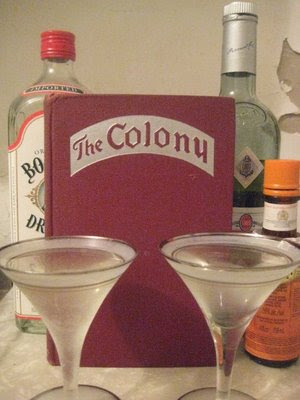
I've written about the Wisconsin state drink, the Brandy Old-Fashioned, many times on this site. Imbibe, however, recently gave me the opportunity to weigh in on the drink's provenance in print. The article appears in the new March/April issue as a back-page "Quench" feature. I guess, at this point, I could be called the leading journalist authority on this weird, but tasty cocktail. An odd claim to fame, but I'll take it.
Where Brandy's Always in Fashion
Every evening at 5 sharp my father used to fix my mother the first of a few Old Fashioneds she would enjoy during the cocktail hour. I never thought much of it while growing up in Milwaukee; to me, she was just sipping on a boring drink with a fuddy-duddy name. Many years later, however, when I developed a respect for this venerable classic cocktail, I realized that Mom hadn’t actually been enjoying a whiskey-based libation. Turns out, she was a brandy drinker.
Ask for a Brandy Old Fashioned in New York, San Francisco or Seattle, and you’re likely to receive a puzzled, skeptical look. Put in your order at any bar in the Badger State, however, and your bartender will get right to work.
Wisconsin loves brandy. For many years the state consumed more of the brown spirit than anyone else in the U.S., only recently falling behind Maryland (for reasons unknown). Not surprisingly for a population better known for its beer intake, Wisconsinites don’t go for fancy, expensive brandies. Their favorite brand is Korbel, which, with its light body and limited flavor profile, makes for an adept mixer. In fact, of the 360,000 cases of brandy produced by the California-based winery in 2007, some 150,000 went to America’s Dairyland. Many of those went to a Madison tavern aptly called The Old Fashioned, where, on an average weekend night, 200 Brandy Old Fashioneds grace the bar. “You go to Wisconsin and they say, ‘Oh, Korbel makes a champagne, too?’ ” says Margie Healy of Korbel.
But the ritual surrounding the Brandy Old Fashioned goes beyond an insistence on Korbel. Wisconsinites, while sometimes indiscriminate in how much they drink, are deadly specific about what they drink. Each cocktail begins roughly the same: an orange slice and a cherry, muddled in a rocks glass with sugar and Angostura bitters; pour in the brandy and add ice. A call for “sweet” means it’s topped off with 7-Up or Sprite; “sour” gets you sour mix instead of soda pop. And “Press” is finished with a combination of 7-Up and soda water. Jennifer DeBolt, general manager at the Old Fashioned, says that some patrons request their drinks be finished with pickled mushrooms or pickled brussels sprouts. In the northern part of the state, garnish specification is apparently a must.
Why Wisconsin laps up so many barrels of brandy has long been a subject of speculation. The most plausible theory I’ve encountered was laid out in a 2006 article in the Madison paper The Isthmus. Reporter Jerry Minnich pointed out that the wine-making Korbel brothers exhibited their new brandy at the 1893 Columbian Exposition in Chicago, which attracted 27 million visitors, many of them from neighboring Wisconsin. (Not incidentally, nearby Minnesota also likes brandy, and Illinois and Michigan are no slouches.)
So if the how and why of Wisconsin’s brandy affinity make sense, what explains the origins of the misbegotten Old Fashioned? No one seems to know, but the use of brandy in what is traditionally a whiskey cocktail isn’t really that random. After all, an even older whiskey cocktail, the Sazerac, began life as a brandy drink and, structurally, the Brandy Old Fashioned resembles a 19th-century Cobbler.
Ultimately, as with many drinks, the Brandy Old Fashioned’s appeal is a matter of context. “To me, [this cocktail] conjures up the supper club,” said Wisconsin-based wine importer Rebecca Cecchini, mentioning another of the state’s treasured culinary traditions. “There’s always the Friday night fish fry, and it starts with the Brandy Old Fashioned.”
—Robert Simonson














